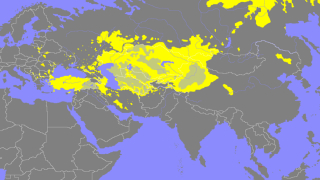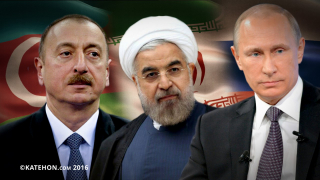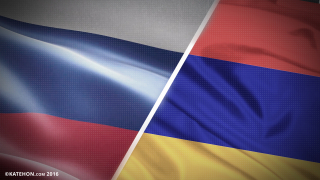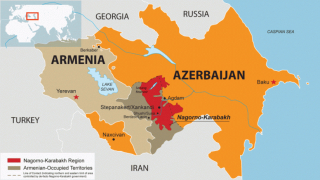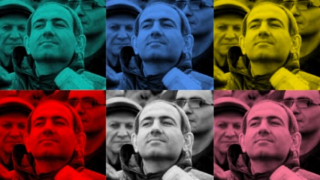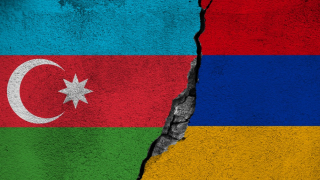Lessons from the war in Nagorno-Karabakh
14.12.2020
Why did the Armenian army prove to be weaker and what mistakes did it make in preparing for military operations, are issues being discussed after the Nagorno-Karabakh war. Namely, this war was only partially "Blitzkrieg", as they call it, because the test attacks that tested the Armenian defense began in 2016 and were repeated periodically. There is also the preparation of this operation, for which the elite parachute brigade of the Azerbaijani army was transferred to the front lines, which together with other units formed a corps of 25,000 soldiers.
Armenia and Nagorno-Karabakh needed to think about what was happening back in the summer, when sporadic exchanges of fire began along almost the entire front line. However, the Armenian structures in charge of national security did not properly assess this. Azerbaijan gradually formed two strike corps in which it gathered the most ready units of its army, including parts of the deep reserve. Even warehouses have been built closer to the contact line, and a fuel supply system has been established. All of this could be seen simply through binoculars, not even having to resort to complex reconnaissance operations.
In addition, the Armenian intelligence service did not provide the country's political leadership with an accurate assessment of which weapons and in what quantity Azerbaijan is buying. Based on the analysis of these purchases, Armenia and Karabakh would be able to build a model of military tactics for the one that Baku was preparing. First of all, this applies to imported drones and self-propelled artillery that supports offensive tactical groups. This alone would be enough for the Armenian army to understand what they are planning on the other side of the front. On a psychological level, both Karabakh and Armenia relied on memories of the 1994 victory over Azerbaijan. Despite the obvious numerical and qualitative superiority of the Azerbaijani army, a legend lives on in Stepanakert and Yerevan. This attitude towards Azerbaijan has led to a loss of vigilance.
Another circumstance is also very important. Over the past year, the Armenian military has reduced military contacts with Russia to a minimum, and also all contacts in the intelligence sphere of the two countries have been diminished, and this was done at the initiative of the political leadership of Armenia. Nikol Pashinyan ``beheaded`` the military and intelligence leadership and placed Russophobic people in key positions, who did not see the construction of military depots and the transfer of entire Azeri corps to the contact line this summer. Moreover, in the last six months, the General Staff of Armenia has been subjected to mass layoffs of officers who in their time graduated from the military academy in Moscow and later went there for further training.
In addition to the above, new weapons were poorly purchased, especially for air defense, which plays a crucial role in modern wars. Karabakh's air defense system consists mainly of 9K33 Osa(low-altitude, short-range tactical surface-to-air missile system), Strela-10(visually aimed short-range surface-to-air missile system ), 2K12 Kub(low to medium-level air defence system designed to protect ground forces from air attack). However, all these systems are manufactured in the Soviet Union and are outdated. This air defense systems would be good to protect the country from the "old format" of the Azerbaijani air force. Very soon it was found that this war will be for something very specific, because of it's massive use of drones, kamikaze drones, kamikaze airborne missiles. In this regard, special emphasis must be placed to the Bayraktar TB2 (Turkish medium altitude long endurance unmanned combat aerial vehicle capable of remotely controlled or autonomous flight operations) and Israeli IAI Harop (kamikaze drone).
Thanks to the irresponsible policy of the new Armenian government, led by Nikol Pashinyan, almost nothing has been done to tactically oppose Azerbaijan. Moreover, there have been incredible examples of corruption, bordering on treason.
Some high-ranking individuals (civil-servants and officers alike) have since come forward accusing prime minister Pashinyan and some of his colleagues of fraud and corruption (for personal financial gains) with regards to arms dealing. Those accusations include the Armenian prime minister's alleged attempts at making money on the back of his own ministry of defence.
Without getting into too much detail, a colleague of Pashynian would purchase military hardware in Russia or elsewhere at a discount and then resell them at a higher price to anybody willing to buy them. This would include the Armenian army which as a result might have ended up paying too much for some of its most recent acquisitions.
Regardless of whether those accusations are real or not, it is clear that one could not help but raise an eyebrow looking at the Armenian armed forces' procurement and recent hardware purchase. The biggest example of them all goes back to January 2020 when Pashynian announced that Yerevan had procured 35 units of 9k33 OSA short-range tactical SAM for the bargain price of $27 millions.
Those SAM batteries were apparently second hand ones purchased from Jordan. Jordan bought them from the Soviet Union back in... 1983! We are talking about the OSA-AK or OSA-AKM produced in the late 1970's and early 1980's! Those batteries had actually been retired by Amman as they were deemed obsolete!
Those batteries were apparently meant to be modernised by the Armenian defence industry before being pressed into service. One must wonder how many components needed to be changed/modernised on such old systems: The OSA was designed in the 1960's! Even the AKM variant is still nearly 40 years old! The radar and fire control systems must have been near enough useless. And the missiles, stored in their transport/launch containers, must have reached the end of their service life quite a while back! When you factor all this in, you realise that $27 millions for those 35 units is pure corruption.
So... Were all those obsolete platforms fully upgraded before the beginning of the war (they had 9 months to do so)? Well, Armenian`s lists 15 OSA batteries destroyed. The Azeris list 40 of them neutralised. We know the Armenian MoD minimised its losses while the Azeri MoD grossly overestimated its "kills". So the truth is in between those two figures. The ex-Armenian Chief of Staff called the OSA "useless" and admitted the 9k33 batteries did not manage to shoot down a single drone. There are pictures of Armenian OSA batteries deployed during the war still sporting their Jordanian camo...
Despite all of the above, Azerbaijan had 2,783 soldiers killed, with another 100 missing. Which means that the losses of Azerbaijan were almost 2900 soldiers. At the same time, Armenian losses are estimated at about 2,317 troops. This data shows us that the main reason for the defeat of the Armenians is the inability of their political leadership to prepare the army for war.
How long the new situation will last, how things will continue, depends on many factors, including the ability of Armenia to help maintain Nagorno-Karabakh in the new conditions. With, of course, a new diplomatic approach that will promote a political solution for Nagorno-Karabakh. Because, in spite of everything, after this war, as far as a long-term and sustainable solution for this territory is concerned, nothing has been resolved. Azerbaijan is in a better position today than earlier, but the solution has yet to be negotiated.


